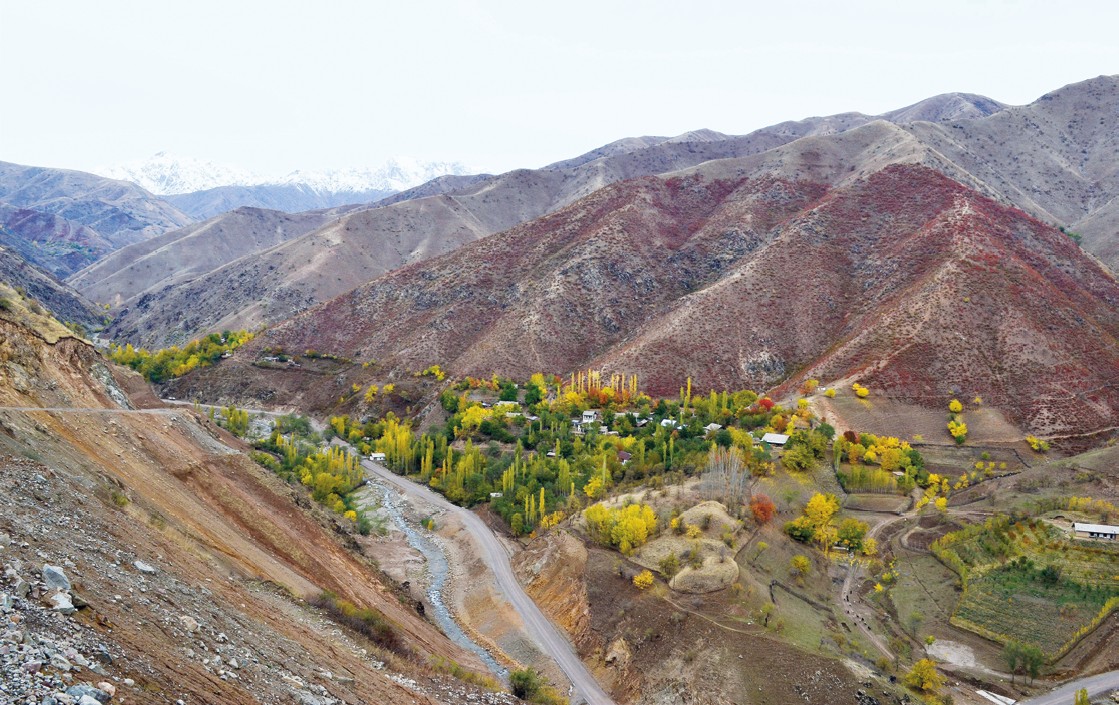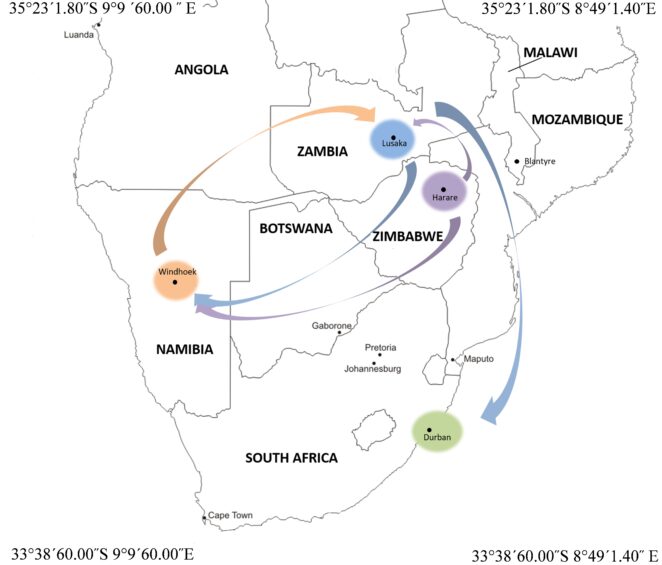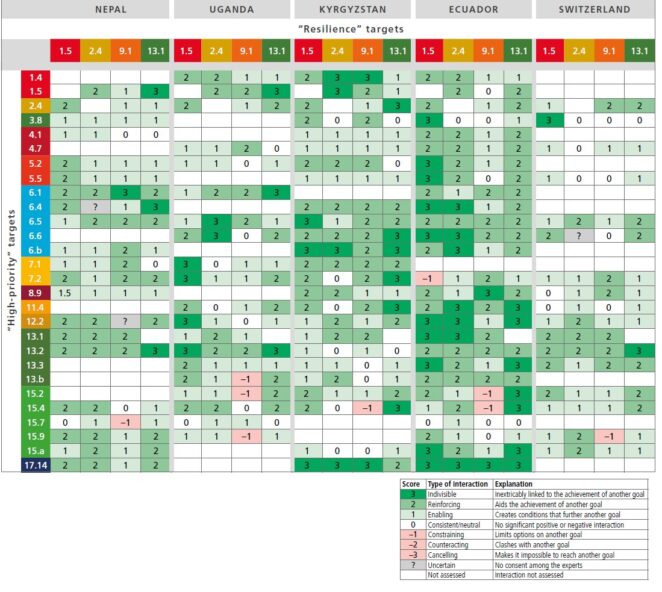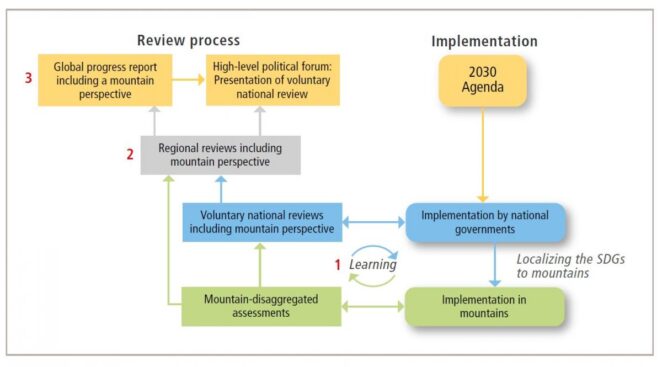Leaving no one in mountains behind – Localizing the SDGs for resilience of mountain people and ecosystems

Introduction
Mountains are home to approximately 915 million people and harbour rich natural and sociocultural diversity, providing essential ecosystem services to up to half of the world’s population. However, numerous people living in mountains worldwide face multiple challenges in securing sustainable livelihoods. Moreover, mountains are among the regions most affected by climate change. Building the resilience of mountain communities and ecosystems is thus pivotal to support pathways to sustainable development in mountains.
The 2030 Agenda’s stated aim of achieving a ”better and more sustainable future for all” presents a major opportunity to improve mountain people’s livelihoods and safeguard mountain- based natural resources. Indeed, the 2030 Agenda explicitly highlights the importance of mountains for sustainable global development in the SDG targets 6.6, 15.1 and 15.4. However, the 2030 Agenda does not explicitly stress the needs and priorities of people living in mountains.
To harness the 2030 Agenda effectively on behalf of mountains, we must localize the SDGs to mountains by setting relevant priorities, determining effective means of implementation, and adopting adequate indicators to measure progress.
In this Issue Brief, we present initial steps towards localization of the 2030 Agenda to mountain areas. The programme Promoting Sustainable Mountain Development for Global Change (SMD4GC, see box on the back cover of the publication) invited experts in Nepal, Uganda, Kyrgyzstan, Ecuador, and Switzerland to contribute to assessments based on the following questions: What SDG targets have a high priority in terms of addressing the most critical development issues of mountain areas in their countries? Which of these priority targets help to strengthen the resilience of mountain communities and ecosystems?
*Download the full publication from the right hand column. The key messages from the publication are provided below. See the full text for much more detail.
SDG priorities to address mountain needs
Critical development issues
The SMD4GC assessments of the most critical development issues in all five countries point to a variety of environmental, economic, institutional, and political conditions that present challenges and shape people’s livelihood opportunities in mountain areas:
- Common issues include degradation of mountain ecosystems, lack of economic/employment opportunities for communities, and lack of well-maintained basic infrastructure.
- Many of these issues are also exacerbated by common institutional weaknesses.
- Climate change and disaster risks are crucial development issues in all mountain areas.
- Though poverty is a key critical issue in virtually all low- to middle-income countries, it was not cited among the most important development challenges in the mountain contexts assessed.
- Several critical development issues are more specific to individual countries.

High-priority SDG targets
The expert groups identified a broad range of SDG targets as taking priority depending on the specific country and mountain setting (Figure 1). Nevertheless, comparing the assessments from all five countries, several targets within the 2030 Agenda were found to be especially relevant to sustainable mountain development:
- Tackling climate change and mitigating its impacts: SDG 13.2, SDG 13.3 and SDG 7.2.
- Strengthening the resilience of mountain people and ecosystems: SDG 13.1, SDG 2.4, SDG 1.5.
- Conservation and sustainable use of mountain ecosystems: SDG 15.1, SDG 15.2, SDG 15.4, SDG 2.5, SDG 6.6, SDG 6.5, SDG 12.2, and SDG 11.4.
- Eradication of poverty: SDG 1.1 and SDG 1.4.
- Achieving gender equality and empowering women and girls: SDG 5.5 and SDG 5.2.
- Promotion of sustainable tourism: SDG 8.9.
- Health coverage and education (also for sustainable development): SDG 3, SDG 4.1, and SDG 4.7.

Benefits for resilience building
The 2030 Agenda comprises four targets that explicitly focus on resilience building (hereafter called “resilience” targets). They aim at:
- building resilience of the poor and reducing their vulnerability and exposure (SDG 1.5);
- implementing resilient agricultural practices for sustainable food production systems (SDG 2.4);
- developing reliable, sustainable, and resilient infrastructure for economic growth and human well-being (SDG 9.1);
- strengthening the resilience and the capacity to adapt to climate-related hazards and disasters (SDG 13.1).
Experts in five countries were asked to assess whether the selected “high-priority” targets are intrinsically linked to, reinforce, or enable progress towards the “resilience” targets, or whether they instead constrain, counteract, or even cancel out progress towards resilience building. Figure 2 shows some of the results obtained regarding the five countries, arranged in matrices. According to the experts’ comparisons, the “high-priority” SDG targets overwhelmingly contribute in a positive way to “resilience” aims in mountains (Figure 2, green shade). Multiple synergies strengthen resilience:
- Climate action (SDG 13) is important, but not sufficient.
- The resilience of poor people (SDG 1.5) benefits most from synergies.
- Policy coherence (SDG 17.14) is indispensable.
Negative implications for resilience were anticipated in only a few instances:
- Conservation of ecosystems (SDG 15) constrains infrastructure development (SDG 9.1).
- Context matters: contrasts between countries may be due to differences in the countries’ resource endowments or governance systems, as well as differences in understanding of resilience itself.
Therefore:
- When setting priorities for implementing SDGs and corresponding targets, governments should carefully consider interactions between them and attempt to maximize synergies and address possible conflicts and trade-offs at an early stage.
- Rapid assessments by experts can provide important insights and information on how SDG interactions might play out in different mountain areas. Such assessments should be backed by evidence from science and practice to ensure credibility and reliability.
- Monitoring progress towards explicit “resilience” targets only provides limited information about factors of success or failure. Resilience is an outcome of bundles of interventions in different domains. A monitoring scheme that accounts for interactions can contribute to understanding and effectively informing pathways to transformative change.
See the full text for details on the results of the expert assessment of high-priority targets, and for a mountain-specific SDG assessment in Ecuador.

Integrating mountain perspectives in SDG reviews
Recognizing the challenges the task to “leave no one behind” can entail, decision-makers should pursue a pragmatic approach that facilitates inclusive stakeholder processes and considers the different data and knowledge needed at the local, national, regional, and global levels (Figure 5).
Local to national levels
In the context of increasing decentralization of (environmental) governance, national authorities have to engage more with local governments to jointly formulate and implement development policies.Some initial guidelines are as follows:
- Ensure participatory processes that include key actors from mountain regions.
- Agree on delineation of mountains and mountain-specific policy agendas.
- Identify a subset of relevant SDG targets specific to sustainable and resilient development in a given mountain region.
- Pragmatically approach gaps in mountainspecific data.
Regional and global levels
Compiling mountain-related data and information from different national review processes can help to identify important opportunities for cross-border collaboration based on the transboundary characteristics of many mountain ranges and highland–lowland interactions spanning different countries.
- Integrating cross-border data and information can strengthen the position of mountain areas in regional debates and negotiations, notwithstanding context-specific challenges (Figure 5, point 2).
- This also applies to global reviews based on synthesis analyses, findings, and insights from multiple countries and regions (Figure 5, point 3).
Global reviews of progress towards the SDGs could highlight achievements and challenges related to a subset of common concerns in mountains. However, broad reviews cannot capture the entire and diverse range of mountain realities. Ideally, Voluntary National Reviews, regional reviews, and global reviews will complement one another, combining to provide a comprehensive view of progress towards sustainable mountain development for people and ecosystems

Suggested citation
Wymann von Dach, S., Bracher, C., Peralvo, M., Perez, K., Adler, C., and a group of contributing authors. 2018. Leaving no one in mountains behind: Localizing the SDGs for resilience of mountain people and ecosystems. Issue Brief on Sustainable Mountain Development. Bern, Switzerland: Centre for Development and Environment and Mountain Research Initiative, with Bern Open Publishing (BOP).
This publication was supported by the Austrian Development Cooperation and the Swiss Agency for Development and Cooperation.
Further reading
Related resources
- Find more publications and other resources on Sustainable Mountain Development
- Read the report "Safer lives and livelihoods in mountains"
- Explore the Himalayan Adaptation, Water and Resilience (HI-AWARE) project and outputs
- Read a paper on "Alignment to Advance Climate-Resilient Development"
- Explore the 'Leave no one behind' index (ODI 2018)
- Read the issue brief "Shaping the water–energy–food nexus for resilient mountain livelihoods"
- Read the issue brief "Migration and Sustainable Mountain Development - Turning Challenges into Opportunities"
(0) Comments
There is no content